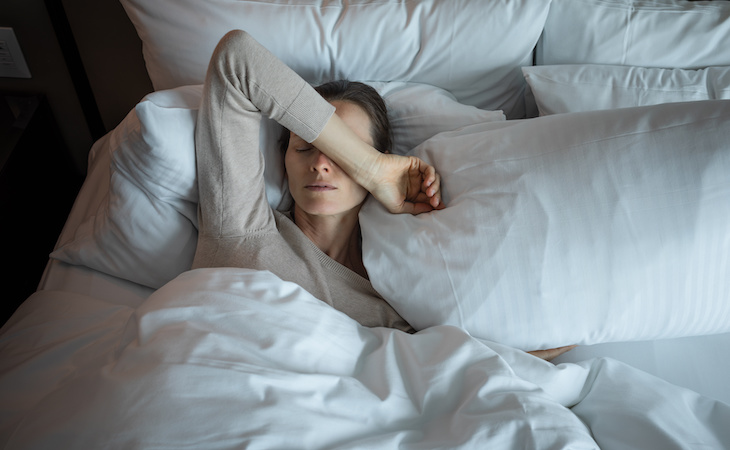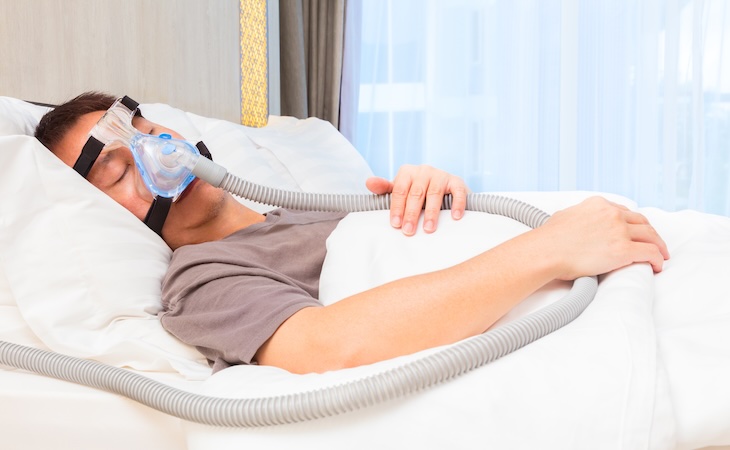Narcolepsy has often found its way into pop culture since it’s a condition that can make characters suddenly fall asleep at a moment’s notice.
Films like Moulin Rouge! and Isle of Dogs feature characters with narcolepsy, which can make an audience chuckle. Even though filmmakers may poke fun at this disorder, narcolepsy really isn’t a laughing matter. In fact, it’s estimated that up to 200,000 Americans have narcolepsy—but only a quarter of them have been properly diagnosed.
That means it’s possible to have narcolepsy and not even know it. Lauri Leadley, clinical sleep educator and president of Valley Sleep Center in Glendale, Arizona, says the symptoms of narcolepsy don’t always present in a way that prompts people to seek medical treatment.
“The symptoms aren’t always severe,” she says. “[Narcolepsy] won’t be diagnosed or treated until 10 to 15 years after the onset of symptoms.”
It’s estimated that up to 200,000 Americans have narcolepsy—but only a quarter of them have been properly diagnosed.
Chris Winter, MD, neurologist, sleep specialist, and author of The Rested Child, shares a similar sentiment, saying, “We as doctors struggle to recognize sleepiness as a disorder. Patients have a tendency to ignore it or explain it away.”
Since it’s a difficult condition for individuals—and even doctors—to pinpoint, read on for helpful information that may lead you to a narcolepsy diagnosis.
What is narcolepsy?
Winter defines narcolepsy as “a disorder of sleep regulation causing the affected individual to feel excessive sleepiness at a near-constant level.”
He explains that it’s caused by a deficiency of a sleep-regulating chemical called orexin. Leadley adds that it’s a rare neurological disorder that impacts the regulation of the sleep-wake cycle.
“In short, it affects the brain’s ability to control the timing of sleep,” she says.
The main triggers that can bring on narcolepsy include autoimmune disease, a chemical imbalance, brain injury, and certain infections, according to Leadley.
“Narcolepsy is typically present in people between the ages of 10 to 40 but can occur at any age,” she says. “Symptoms become more severe as a person ages.”
Narcolepsy can have genetic ties as well. The National Institute of Neurological Disorders and Stroke reports that 10% of people diagnosed with narcolepsy also have a relative with the condition.
What are the most common narcolepsy symptoms?
The top symptom of narcolepsy is “mainly a relentless drive to sleep,” as Winter puts it.
Alex Savy, certified sleep science coach and founder and CEO of Sleeping Ocean, says narcolepsy symptoms typically appear during the adolescent years.
Narcolepsy symptoms can include:
- Sleep paralysis: This is the temporary inability to move or speak during the sleep-wake or wake-sleep transition. Leadley says this can last seconds or minutes.
- Hypnogogic hallucinations: These hallucinations can take place as you fall asleep or wake up. They often manifest as unusual and frightening dreams that can take place in your current environment.
- Excessive daytime sleepiness (EDS): “EDS is the first symptom many people with narcolepsy will experience,” Leadley says. “EDS is responsible for the sleep attacks associated with this condition and causes people to involuntarily fall asleep at inappropriate times.”
- Cataplexy: This is a sudden and unexplained loss of muscle tone typically triggered as a strong emotional response. “Although they are conscious throughout the attack, they generally cannot speak and may lose the use of their arms and/or legs,” Leadley notes.
- Insomnia or fragmented sleep: People with narcolepsy often also have another sleep disorder, like insomnia, reports Mayo Clinic.
Needless to say, these symptoms can make day-to-day functioning quite difficult for those with narcolepsy. Specifically, Leadley says these sudden sleep attacks can make working or driving very dangerous.
“Narcoleptics are likely to experience 10 times more traffic accidents than those who don’t have narcolepsy,” she says.
How is narcolepsy diagnosed?
Like any other disorder, a diagnosis of narcolepsy typically starts with your health history, a physical exam, and bloodwork.
Winter says that often, a doctor will recommend a sleep study and nap study (also known as a sleep latency test) to further confirm symptoms. Leadley says the sleep center should be accredited by the American Academy of Sleep Medicine, which you can search for on their website.
If you suspect narcolepsy, Savy says you can ask your primary care physician for sleep medicine specialist recommendations to find the right doctor.
“A primary care physician might not have a deep enough understanding of this disorder, so it’s better to seek a professional with a thorough understanding of the issue, someone whose specialty is narrowed down to sleep problems,” he says.
Since narcolepsy is a neurologic condition, you might also meet with a neurologist to get a proper diagnosis, Savy adds.
It can be possible to misdiagnose narcolepsy as something else. It’s frequently mistaken for depression and anxiety since these disorders can share similar symptoms.
What’s the best narcolepsy treatment?
While there’s currently no cure for narcolepsy, luckily, there are quite a few treatment options.
Winter says there are up to nine FDA-approved medications that “can be remarkably helpful to patients with the disorder.” These medications are usually nervous system stimulants.
Leadley recommends a combination of medication and behavioral therapy to address narcolepsy, along with scheduled naps and maintaining a regular sleep, exercise, and meal schedule, things that will help keep the condition under control.
“Practice healthy habits,” she emphasizes. “Keep a balanced diet and stick to a set sleep schedule, naps included. Make sure to make plans far enough in advance so you can keep to your schedule.”
Keep in mind that narcolepsy treatments depend on each specific case, says Savy. Only a professional can find the most suitable solution for each patient based on the severity of the disorder, the number of symptoms, and particular lifestyles.
“To manage daily life while dealing with narcolepsy, patients need to follow their medical regimen and doctor’s recommendations,” Savy shares. “Finding support online or in local communities can be beneficial too, as it’s easier to deal with something challenging when you can share it with others.”
You might also want to educate your family and friends on the issue to avoid misunderstanding or confusion when one of the symptoms occurs, suggests Savy.
Taking care of your safety is of the utmost importance as well. For example, you might want to avoid driving or operating machinery if the medication takes its time to start working, says Savy.
From narcolepsy to restless legs syndrome, here are the most common sleep disorders and how to treat them.




